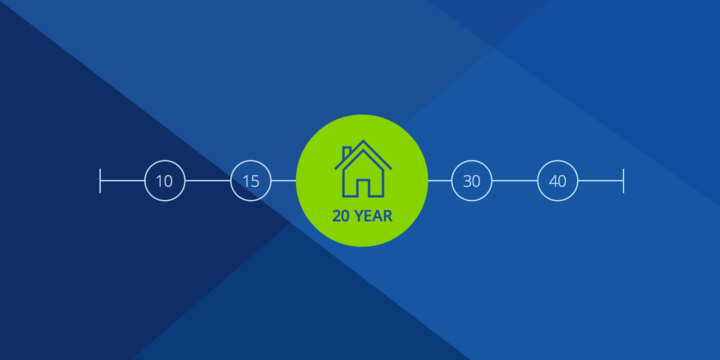What Is a Prime Rate?


Written by Vivian Tejada on March 7, 2025
Reviewed by Neil Swanson and Kara Ng, Edited by Jessica Rapp
The prime rate, also known as the prime lending rate, is the favorable interest rate financial institutions reserved for borrowers with strong credit profiles. Lenders use the prime rate as a financial benchmark when setting interest rates for consumer products, such as credit cards, lines of credit, auto loans, and mortgages. Each financial institution sets their own prime rate, which is why mortgage rates often vary from one lender to the next.
What is the current prime rate?
As of March 2025, the average prime rate in the U.S. is 7.50%.
Federal funds rate vs prime rate
A financial institution’s (like a bank or commercial lender) prime rate is the starting point for all other interest rates charged by that financial institution. Prime rates are guided by the economy and influenced by the federal funds rate, which is the rate banks use when borrowing from each other. The Federal Reserve sets the funds rate, but banks set their own prime rates.
The funds rate reflects the cost of short-term borrowing for financial institutions. When the federal funds rate goes up, it becomes more expensive for lenders to lend money. To remain profitable, lenders typically need to raise their prime rates. Alternatively, when the Fed lowers the federal funds rate, banks often need to lower their prime rates to remain competitive.
While there is often a correlation between the federal rate and prime rate, they are not the same. When calculating the interest rate for a specific product, such as a mortgage, the lender typically adds a percentage on top of the prime rate. The size of that percentage represents the mortgage margin and will depend on the borrower’s risk profile.
How are prime rates set?
While most financial institutions base their prime rates at least partially on the federal funds rate, the Fed doesn’t set the prime rate for individual lenders. Lenders independently determine their base prime rates for their various consumer lending products.
Lenders consider the federal funds rate, consumer demand for loans, and the overall state of the economy when setting their prime rates. While the gap between fed funds and prime rates can fluctuate, a lender's prime rate is typically 3% higher than the federal funds rate.
The Wall Street Journal (WSJ) surveys large banks and financial institutions to determine what prime rates are being offered to the most creditworthy customers across the country and then publishes the most used prime rates, as the WSJ Prime Rate. The WSJ Prime Rate is the base rate Wall Street Journey posts based on their survey of at least 70% of the nation's largest banks.
How often do prime rates change?
Prime rates can change daily, but federal funds rate changes are less frequent. While banks often update their prime rates in response to the Fed’s interest rates, lenders are not required to change their rates following the Fed’s decisions.
The federal funds rate has the potential to change up to eight times a year, after one of the Fed’s Federal Open Market Committees (FOMC). However, it’s not a guarantee. The Fed changes interest rates based on how the economy evolves and may even wait several years after a significant economic event (such as a recession) before adjusting interest rates. They can also step in with emergency rate cuts before a scheduled meeting.
Depending on the banks surveyed, the WSJ Prime Rate can change several times a year in response to prime rate changes or not at all. The WSJ typically publishes a new WSJ Prime Rate when three-quarters of the banks surveyed change their prime rates.
Here’s an overview of how prime rates have changed since 2020, when the COVID-19 pandemic first hit:
| Date of rate change | Prime rate | +/- change |
|---|---|---|
| 1/29/2025 | 7.50% | 0.00% |
| 12/18/2024 | 7.50% | -0.25% |
| 11/7/2024 | 7.75% | -0.25% |
| 09/18/2024 | 8.00% | -0.50% |
| 07/26/2023 | 8.50% | +0.25% |
| 05/03/2023 | 8.25% | +0.25% |
| 03/22/2023 | 8.00% | +0.25% |
| 02/01/2023 | 7.75% | +0.25% |
| 12/14/2022 | 7.50% | +0.50% |
| 11/02/2022 | 7.00% | +0.75% |
| 9/21/2022 | 6.25% | +0.75% |
| 7/27/2022 | 5.50% | +0.75% |
| 6/15/2022 | 4.75% | +0.75% |
| 5/4/2022 | 4.00% | +0.50% |
| 3/16/2022 | 3.50% | +0.25% |
| 3/15/2020 | 3.25% | - 1% |
| 3/3/2020 | 4.25% | -0.50% |
| 10/30/2019 | 4.75% | -0.25% |
How does the prime rate affect mortgage rates?
The interest rates you receive when you borrow money for a mortgage are affected by the Fed funds rate, the prime rate and other market forces. Just because one goes up or down doesn’t necessarily mean the actual interest rate will do the same.
Prime rates could impact adjustable-rate mortgage (ARM) borrowers more than other types of mortgage borrowers. The interest rate on an ARM is fixed during the first five to seven years and variable for the remainder of the loan term. ARM borrowers might experience higher monthly mortgage payments during this variable period of the loan term if the prime rate goes up, or lower monthly mortgage payments if the prime rate goes down.
What loans are not impacted by a change in the prime rate?
Prime rate changes don’t affect any loan or line of credit with a fixed interest rate. Homeowners with a fixed-rate mortgage don’t need to worry about varying monthly payments unless they’ve refinanced into a variable-rate mortgage. If prime rates drop significantly, you might consider refinancing into a lower interest rate to lower your monthly mortgage payment.
Contact one of our loan officers at Zillow Home Loans* to learn more about the interest rates and loan options you may qualify for with us.
*An equal housing lender. NMLS #10287
Tags
How much home can you afford?
At Zillow Home Loans, we can pre-qualify you in as little as 5 minutes, with no impact to your credit score.
Zillow Home Loans, NMLS # 10287. Equal Housing Lender
Get pre-qualifiedHow much home can you afford?
See what's in reach with low down payment options, no hidden fees and step-by-step guidance from us at
Zillow Home Loans.
Zillow Home Loans, NMLS # 10287. Equal Housing Lender
Calculate your BuyAbility℠
Related Articles
Get a mortgage with Zillow Home Loans
Go from dreaming to owning with low down payment options, competitive rates and no hidden fees. A dedicated loan officer will guide you until you have your keys in hand.

Zillow Home Loans, NMLS #10287. Equal Housing Lender.



